Planning your own trip? Prepare for your trip
Use Rough Guides' trusted partners for great rates
Book your individual trip, stress-free with local travel experts
Plan your tailor-made trip with a local expert
Book securely with money-back guarantee
Travel stress-free with local assistance and 24/7 support
Despite spending the last decade as Europe’s fastest-rising holiday destination, Croatia and its Adriatic Coast retains an enticingly unique allure, from Dubrovnik’s medieval majesty, to its unspoiled Adriatic islands - some characterised by charming fishing villages, others impossibly glamorous. Then there’s Croatia’s thriving festival scene, and fabulous food.
The information below is from The Rough Guide to Croatia, our in-depth Croatia travel guide - check it out for your all your Croatia travel needs.
For more tips about travel to Croatia, read our full facts about Croatia article.
Choosing where to visit in Croatia can be tough. This is, after all, a country that pretty much offers it all - ancient history, idyllic islands, and contemporary cool. Here’s an outline of options to consider for your visit to Croatia, with full details in our Croatia travel guide book.
If you’re after history and culture when you travel to Croatia, you’ll be pleased to hear the country has both in abundance. Medieval remains, Baroque grandeur and Byzantine monuments await in towns and cities, such as Dubrovnik, Zadar, and Split. Rovinj is resplendent with Venetian architecture, while Pula has a two-thousand-year-old Roman amphitheatre.
Rough Guides tip: As you plan your trip to Dubrovnik, make sure to choose the ideal place to stay in the city.
If you’re looking to escape to the untamed outdoors during your Croatia travel experience, you’re in luck. The country is blessed with staggeringly beautiful national parks, such as the forest-fringed lakes and waterfalls of Plitvice Lakes, and the hiking hotpot of Northern Velebit.
Croatia’s beaches and islands are perhaps country’s top draw. The Elaphite Islands of Kolcep, Lopud and Sipan are among the most unspoiled in the Adriatic, and beaches on the Dalmatian coast - such as those on Brac - are jaw-droppingly attractive.
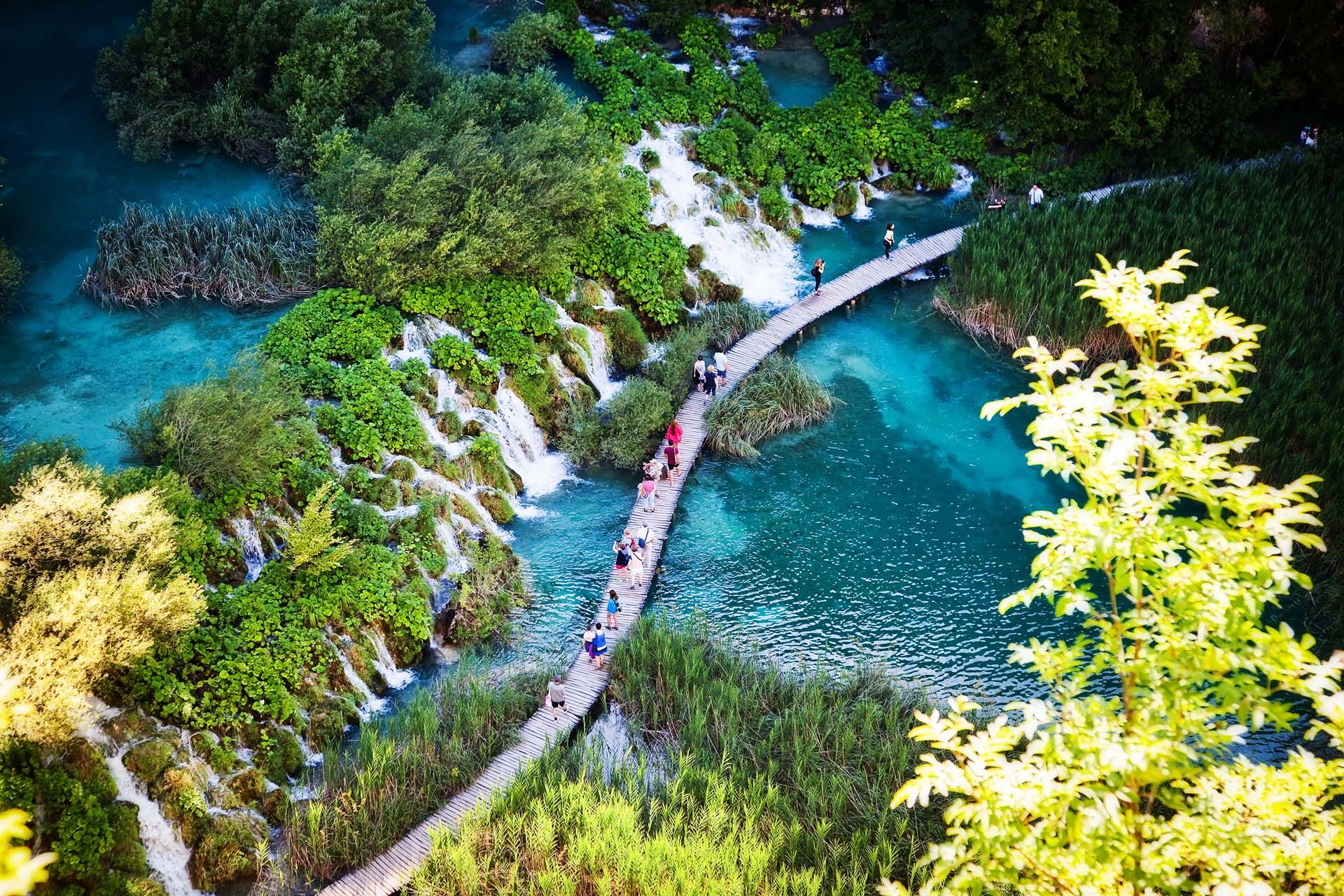
Beautiful waterfalls Plitvice lakes, Croatia © Melinda Nagy/Shutterstock
Here’s a run-down of landmarks and attractions in Croatia everyone should see in a lifetime - places you’ll definitely want to consider visiting during your Croatia travel adventures.
Discover more great places to see in our ultimate list of things not to miss in Croatia.
Croatia is an excellent destination for outdoor activities. Easy rambling territory in inland Croatia is provided by wooded Mount Medvednica close to Zagreb and crisscrossed by well-used trails. On the Adriatic coast, Učka is one of the most accessible mountains, and can be safely bagged by moderately fit hikers. Farther south, the more challenging Velebit range stretches for some 100km along the eastern shore of the Kvarner Gulf. Croatia’s most exhilarating long-distance hiking route, the Premužić Trail, takes in mountain ridges, dense forests and awesome view, making it a top draw for adventurous types who travel to Croatia. You might want to hook up with a local Croatia guide with hiking expertise to make the most of this one.
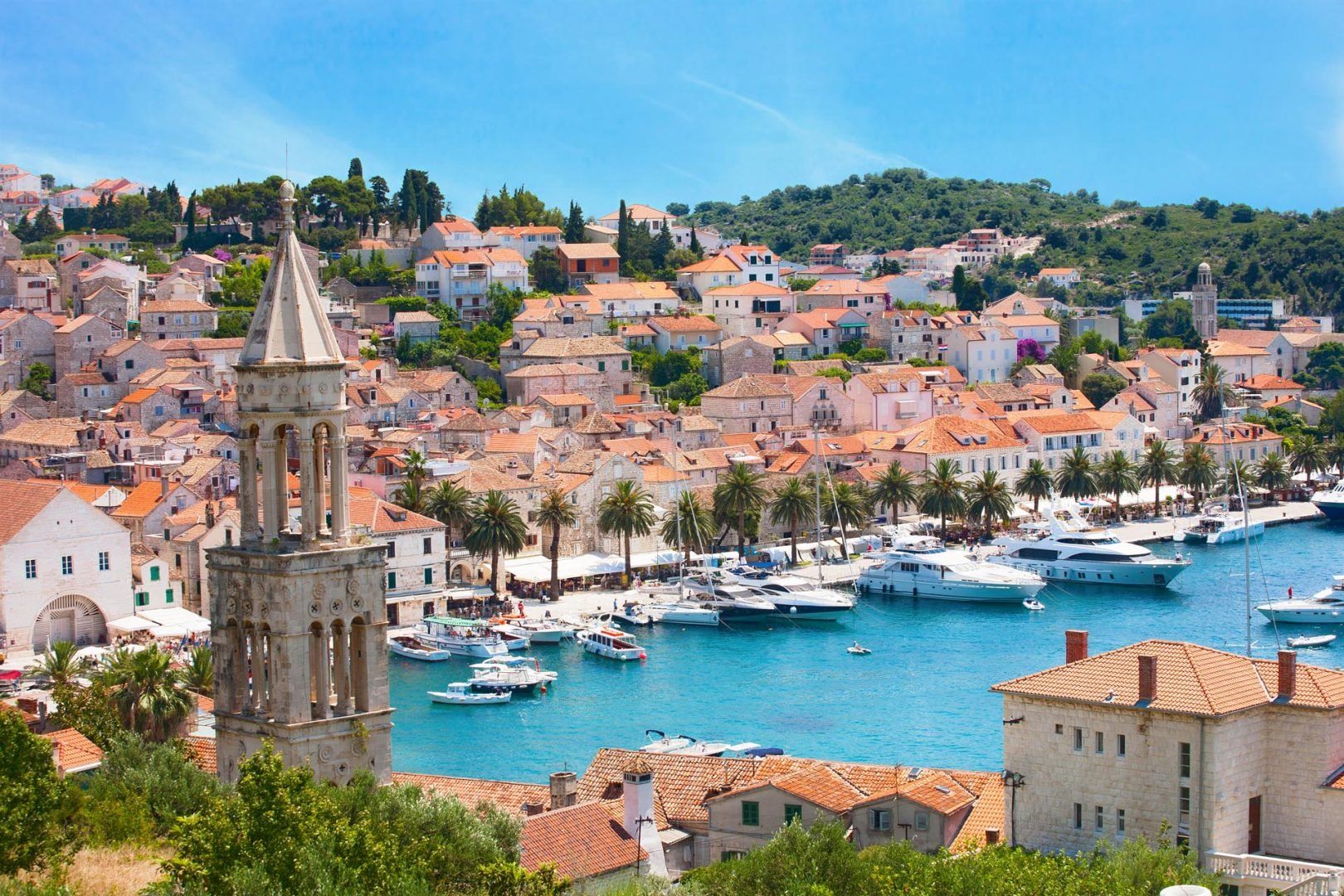
View of Hvar city in Croatia © andras_csontos/Shutterstock
Croatia is the perfect place to take in fascinating history through exploring cities, towns and tiny villages. Walking Dubrovnik’s walls, for example - a brief but breath-taking trot round battlements overlooking the Adriatic - serves as an inspiring introduction to this ancient city. Then there’s Pula’s amphitheatre - Imperial Rome’s greatest gift to the eastern Adriatic still serves as the venue for summer concert. In Split, the former Roman emperor’s pied-à-terre, the Diocletian’s Palace, remains at the heart of the modern city. Many of Croatia’s smaller city’s deliver big on historic allure. Varaždin, for example, is a postcard-perfect Baroque town, complete with opulent squares, crumbling palaces and a unique garden cemetery - hands down one of the best places to travel in Croatia to soak up elegant charm.
Thanks to the crystal-clear waters of the Adriatic and the diversity of its marine life, Croatia has become one of the most popular scuba-diving venues in the Mediterranean over the last few years. There are a growing number of diving centres along the Adriatic coast offering lessons, guided expeditions and equipment rental. Two of the most rewarding areas for diving are the Kornati islands in mid-Dalmatia and the island of Mljet near Dubrovnik.
Where there’s diving, there’s beaches, and Croatia is blessed with some of Europe’s best. Near Zadar long, luxuriant Kraljičina plaža (Queen's Beach) features a brace of beach bars and very little else, save for mesmerising views of the Velebit mountains across the water and a stunning strip of sand. The best beach on the heavenly island of Hvar has to be silkily sandy Grebišće, while the uninhabited islet of Proizd, near Vela Luka on charismatic Korčula Island delivers a sublimely secluded, serene coastline of white sand and sloping rocks.
Croatia has a thriving music scene, best experienced during summer festival season, when pretty much every genre of music is catered for, with indie rock at InMusic, cutting-edge dance music at Tisno and dub-to-dubstep extravaganzas at the Punta Christo fortress, near Pula. Come late July, Pula amphitheatre also plays host to the Pula Film Festival, which premieres the year’s crop of domestic feature films.
The best destination for shopping in Croatia is Zagreb, which offers a range of retail experiences you won’t find along the Adriatic coast, including regular flea and collectors’ markets. Many of Croatia’s best gifts to bring home involve food and drink, such as Croatia’s world-class wines and herb-flavoured rakija, often featuring fragments of herb in the bottle. Soaps made from olive oil and fragranced with local herbs are also a good buy, as are bags of lavender, harvested on the island of Hvar. Intricate embroidery featuring folk motifs is still produced in many areas of inland Croatia, and the Konavle region south of Dubrovnik. Even the smallest pieces make stunning keepsakes.
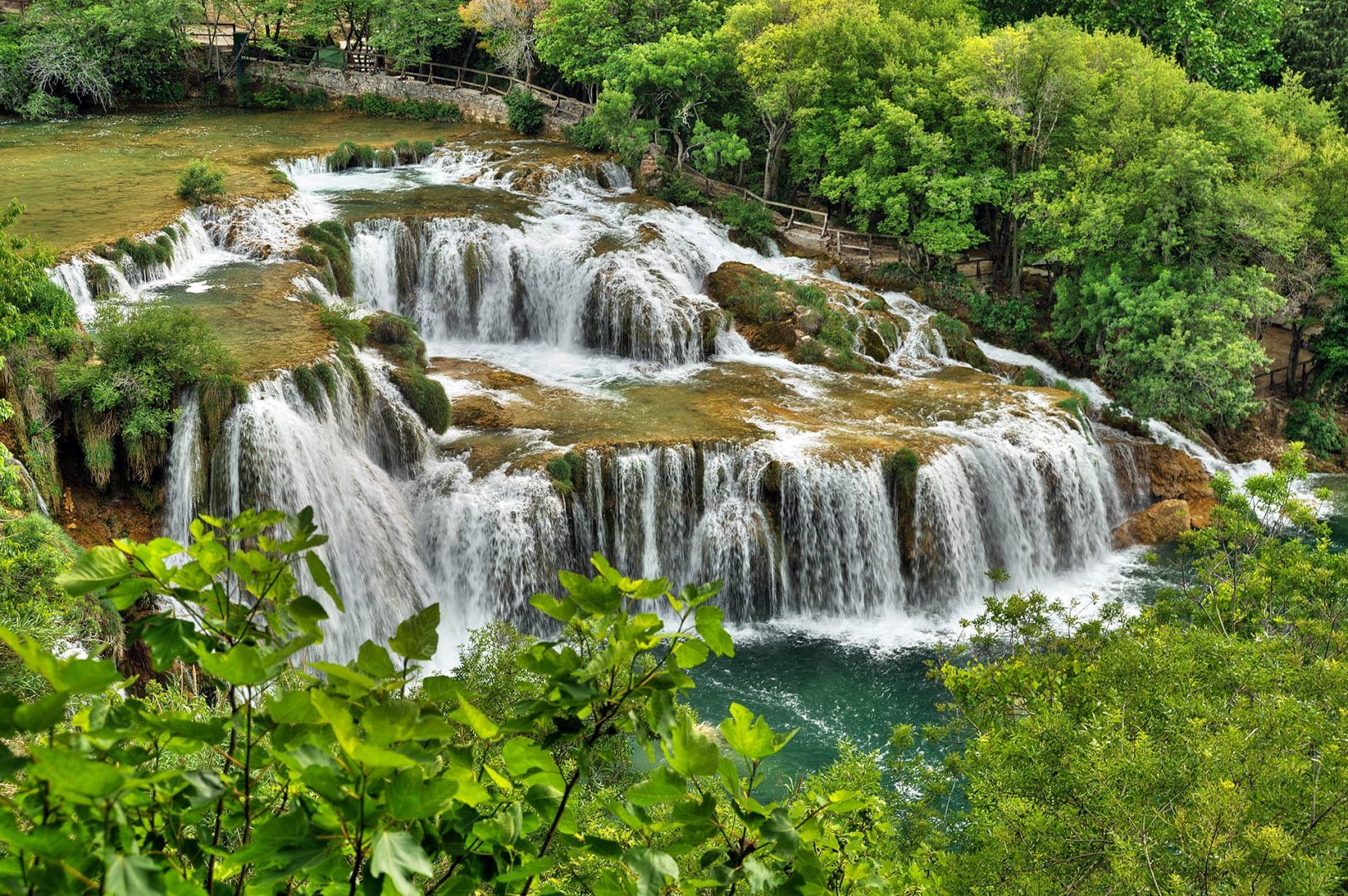
Krka river waterfalls in the Krka National Park, Roski Slap, Croatia © Alena Brozova/Shutterstock
As any Croatia travel guide worth its Adriatic salt will tell you, deciding when is the best month to go to Croatia depends on what you plan to do when you get there. History and culture can be enjoyed year-round, with towns and villages looking especially atmospheric during the winter months. If you’re coming for sea, sun and sand, consider skirting around the school holidays - visit Croatia in May, June or September - avoiding both peak crowds and peak temperatures. This Croatia travel advice applies to nature-lovers too. The national parks look especially stunning in autumn, making it the best time to travel to Croatia for ramblers and hikers.
Find out more about the best time to visit Croatia.
If you plan to travel to Croatia during the summer months, you won’t be short of direct flights from European countries’ major hubs. If you’re coming from North America, however, flying direct still isn’t an option - you’ll have to take a one- or two-stop flight via a main European city, but it’ll be worth it. Travelling by train is convenient if you’re coming from the UK or elsewhere in Europe, and regular ferries run from Italy during summer.
Read on for the best ways to get to Croatia.
If you’re wondering how to how to travel around Croatia independently, it’s worth bearing in mind that its coastal and mountainous terrain can make overland travel rather time consuming. That said, Croatia’s train network is useful for travelling around the north and east of the country, while buses are best for travelling along the coast. With more a thousand islands, don’t pass up the chance to enjoy a spot of island-hopping. Ferry and catamaran services are available throughout the year, and travelling in Croatia by boat is always a highlight.
Learn more about transportation and how to get around Croatia.
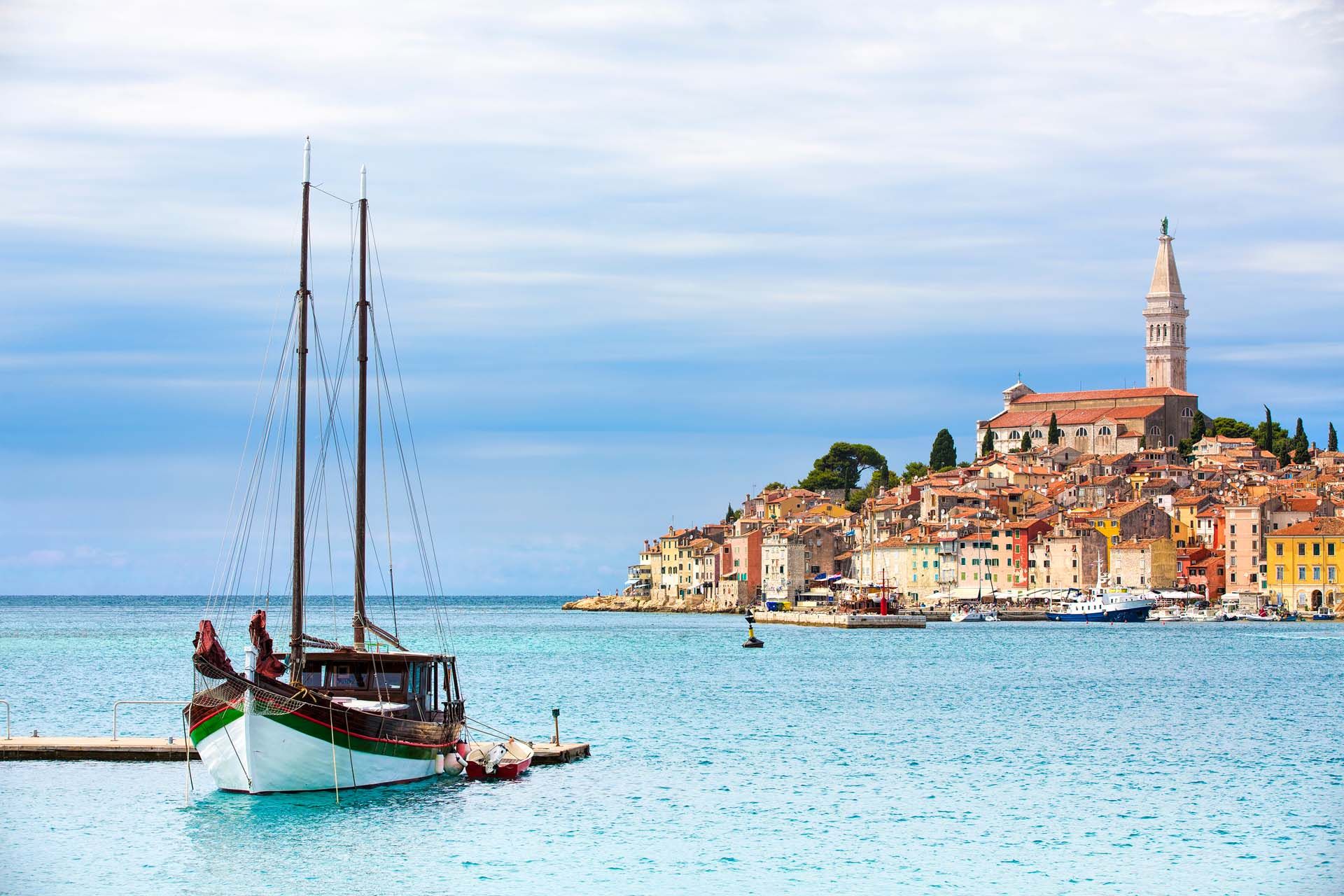
View of Moored Boat and the Old City in Rovinj, Croatia © Rolf E. Staerk/Shutterstock
In part thanks to its status as Europe’s fastest growing destination of the past decade, Croatia has an increasing range of well-equipped four- and five-star hotels, but still a relative shortage of boutique hotels and B&Bs. At present, apartments and private rooms offered by local families represent the country’s best-value accommodation. The Adriatic coast is also good for beautifully situated campsites.
Discover how to find the best accommodation in Croatia.
Thanks to its geographical position, Croatia’s culinary offerings blend central European and Mediterranean influences to delicious effect. So, while every kind of seafood dominates menus along the coast, you’ll also find schnitzel, pastries, and various riffs on pasta and noodles. Regional highlights include Pag cheese from the Kvarner Gulf, and sausages (kobasice), cured ham (pršut), and gnocchi (njoki) from the Istrian Peninsula.
Read more about local food and drink in Croatia.
Croatia’s calendar is crammed with festivals, religious holidays and cultural events throughout the year. Summer is the season of DJ events, big beach parties, eclectic art gatherings and folksy fairs along the Adriatic, with cultural festivals taking place in Zagreb in spring and autumn. Classical music-lovers will adore the six-week Dubrovnik Summer Festival held annually from July, while the Varaždin Festival of Baroque Music sees the city’s many fine churches put to splendid use as concert venues.
To include a festival in your trip to Croatia, check out the month-by-month overview of festivals in Croatia.
Croatia’s capital Zagreb is one of Central Europe’s liveliest cities when it comes to DJ-driven club music and live alternative rock. Though most clubs take a break in July and August, during summer Zagreb is enlivened by an array of nightly open-air gigs, puppet shows and art happenings. Dubrovnik is better known for its charming Old Town bars and restaurants than raving nightlife, though clubbers are well served by Banje Beach Club and the cavernous Revelin club that’s held in the atmospheric, barrel-vaulted chambers of the Revelin Fortress. On the coast, Pula’s amphitheatre offers everything from opera to pop cocerts, while its Rojc cultural centre, occupying a former barracks, is home to dozens of cultural organisations and hosts a variety of gigs and theatre events.
One of the great things about Croatia travel is that the country can be enjoyed on a swift city break basis, while also having plenty to keep visitors more than satisfied for weeks (or months) at a time. Ideas for a few days in Croatia include immersing yourself in exploring Dubrovnik’s delights (Game of Thrones fans will have fun spotting all the locations), and taking a trip to one of the nearby islands - Korčula, for example, where fine wine and rustic charm awaits.
Among the best ideas for spending a week and more in Croatia is exploring the Adriatic coastline. For example, in two weeks you could set out from Dubrovnik to Korčula, then take a swift catamaran to chic Hvar before continuing to Split. Continuing north, a stay in Zadar delivers both history and contemporary style, before Pula and Rovinj reveal their Mediterranean charisma (and Pula its Roman roots).
For more inspiration see some of the Croatia itineraries from our Croatia guide and local travel experts.

Split, Croatia © novak.elcic/Shutterstock
From travel safety to visa requirements, discover the best tips for visiting Croatia
For advice about practical matters when travelling in Croatia, check the travel advice for Croatia.
If you’re wondering how much to budget for a trip to Croatia, or whether it’s expensive, it’s true to say that Croatia is by no means a bargain destination, and the cost of accommodation - on a par with Western European countries for most of the year - shoots upwards in July and August. Eating and drinking, however, remain good value, especially if you shop in markets. If you’re staying in hostels, self-catering and travelling by public transport, expect to spend at least 600Kn/£60/€80/US$85 per person per day. At the other end of the scale, staying in a good hotel, eating in nice restaurants, renting a car and not skimping on the cocktails will involve a daily outlay of 1500Kn/£150/US$220 or above.
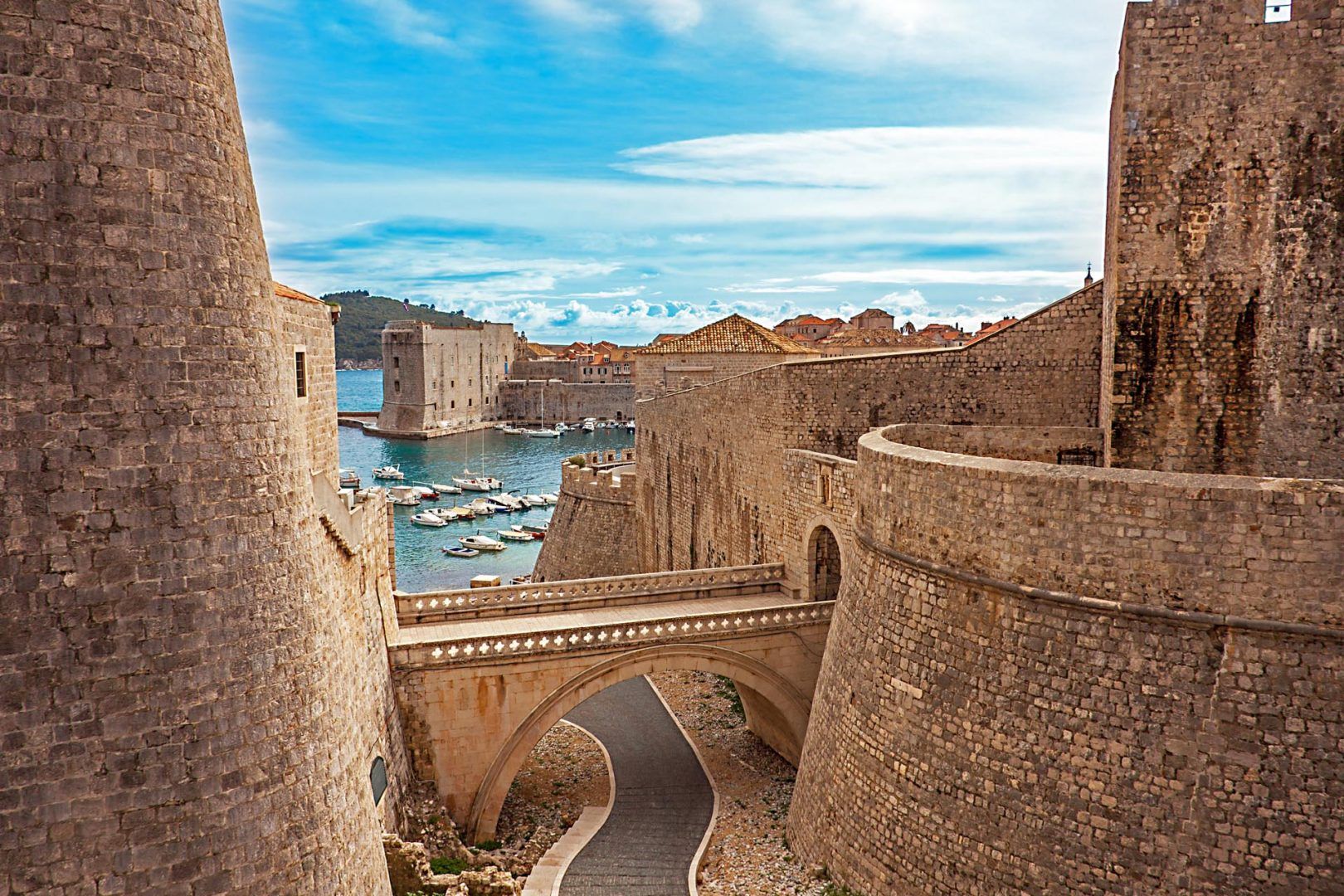
Dubrovnik, Croatia © SchnepfDesign/Shutterstock
The crime rate in Croatia is low by European standards. Your main defence against petty theft is to exercise common sense and refrain from flaunting luxury items, especially in the bigger towns and cities.
For up to date information about safety and travel requirements for Croatia, check government guidelines. UK nationals should heed Foreign, Commonwealth & Development Office advice, while travellers from the US should check governmental travel advisory guidelines for Croatia.
Use Rough Guides' trusted partners for great rates
written by
Rough Guides Editors
updated 22.09.2021